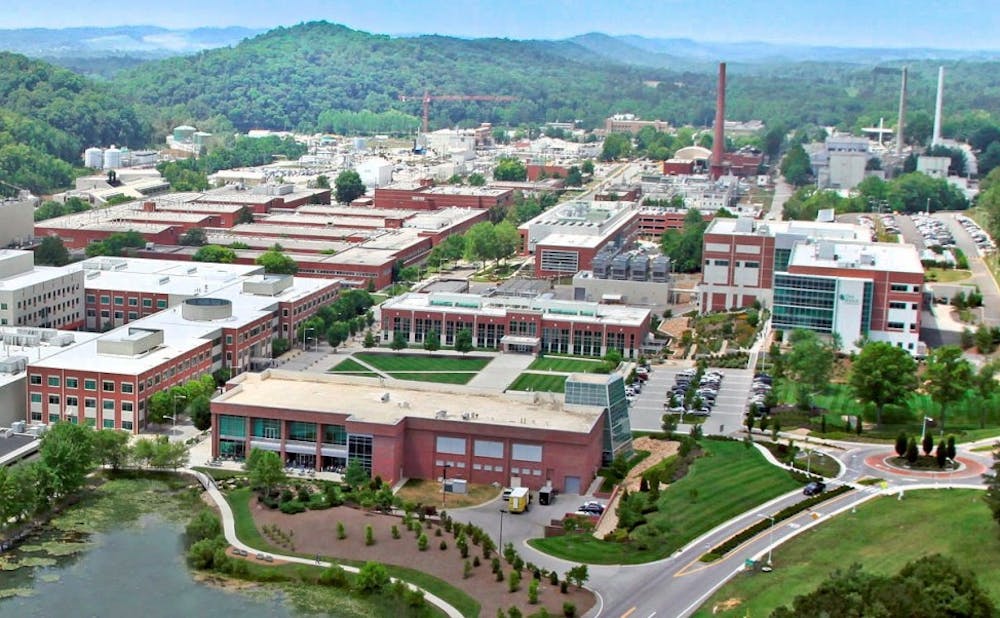Duke physicists have finally found evidence for a 43-year-old prediction that enhances the modern understanding of the universe.
The team, called the COHERENT Collaboration, observed that the neutrino—a fundamental atomic particle with no charge and almost no mass—can scatter off the nucleus of an atom. Its findings were published in the journal "Science" Aug. 3.
“Neutrinos are weird. They’ve always been weird, and they've always gone against our expectations,” said Philip Barbeau, assistant professor of physics and one of the paper's authors. “Everything else, every other particle, we write down an equation for it, especially in the standard model, and it sort of makes sense."
He explained that neutrinos are not quite as predictable as other particles, calling them "the rebels of the particle field." Neutrinos can pass through the entire earth without interacting with any other particles.
Although neutrinos are known for their lack of reactivity, they do occasionally interact. In the 1970s, a theorist predicted that physicists may be able to observe a new type of neutrino interaction called coherent neutrino scattering. Since then, researchers have regarded proof of the phenomenon as "something of a holy grail," Barbeau explained.
"It happens the most of any type of neutrino interaction, but it's very difficult to see," he said. "So we've been spending 43 years trying to look for it.”
Barbeau has spent 15 years of his career searching for proof of the interaction. In 2014, he joined the COHERENT Collaboration with other particle physicists. He said the collaboration came about because resources in the field were limited.
“It's been so long that we haven't seen this, that people were starting to doubt that it was even worth looking for it, that it was maybe a waste of money and time,” Barbeau said.
The team worked to observe coherent elastic scattering from intense bursts of neutrinos at the U.S. Department of Energy’s Oak Ridge National Laboratory in Tennessee.
After building the detectors, the scientists had to wait around 15 months for the result. Six months ago, they convened at their home laboratory in Oak Ridge to reveal the data.
“We all got pretty excited and then started planning how we were going to write this paper,” Barbeau said. "I was in the room, and there were many of us who have been trying this for a long time, friends of mine that we go back working together up to 15 years. "
The findings may allow particle physicists to go beyond the “standard model” of particle physics, which describes fundamental forces and particles in the universe, physics graduate student Connor Awe, who was involved in the research, explained.
"The discovery of the Higgs-Boson was sort of the final piece of the puzzle that put the standard model together," Awe said. "We have great confidence in it now as a model of nature, but we know that it can’t be the final answer because it doesn’t include gravity. So, we know it has to break down somewhere, we’re just not sure where yet. And there are a lot of avenues people are taking toward trying to find cracks.”
The team has also included graduate, undergraduate and even high school students in their research efforts.
"Some of these experiments can be very large, and you need large construction crews and technicians and thousands of people just to build it,” Barbeau said. “Here, every single one of our students, even our high school students, can invent their own neutrino detectors sometimes, if they’re lucky enough.”
Barbeau noted that the collaboration’s inclusion of students was the most rewarding part for him. He encouraged all physics students to get involved in research.
“The funny thing about physics is that about half of everything you learn happens in the laboratory," he said. "If you just go through an undergraduate degree in physics without having spent a significant time in the laboratory, you really only learned about half of everything you need to know.”
Get The Chronicle straight to your inbox
Signup for our weekly newsletter. Cancel at any time.

